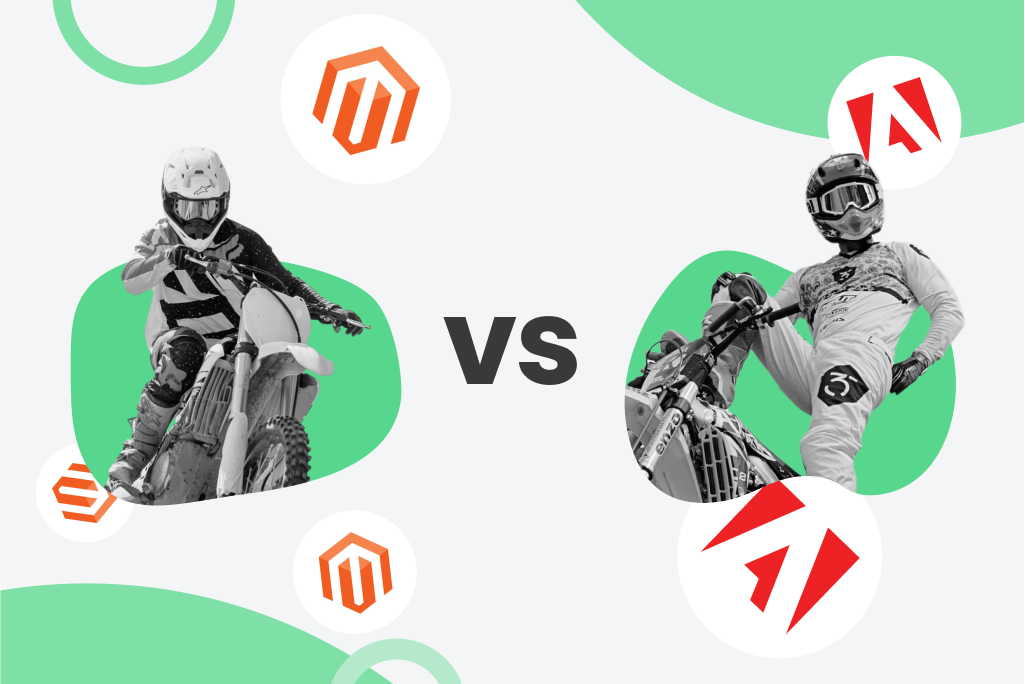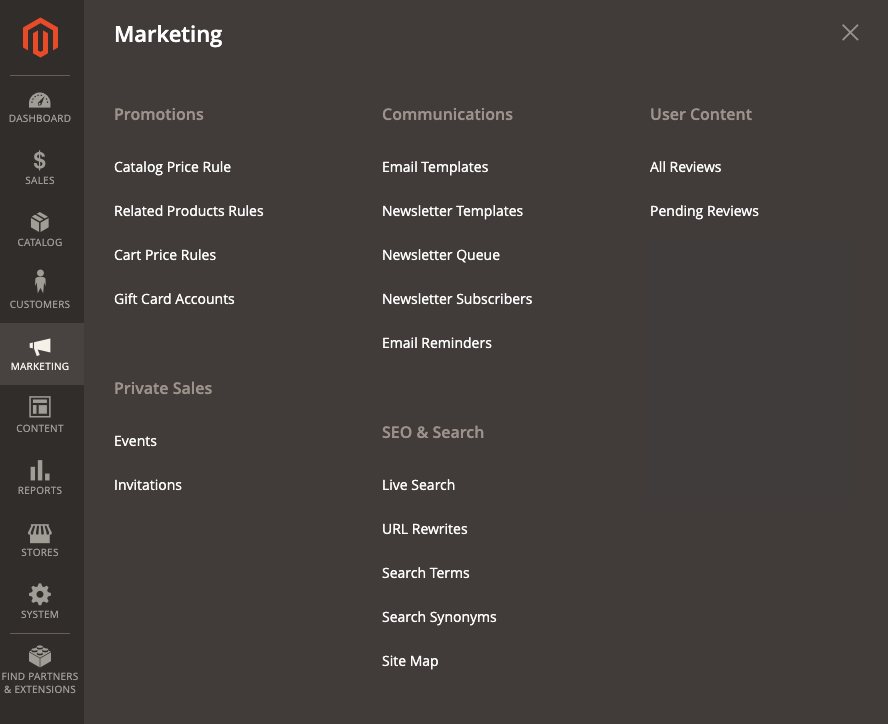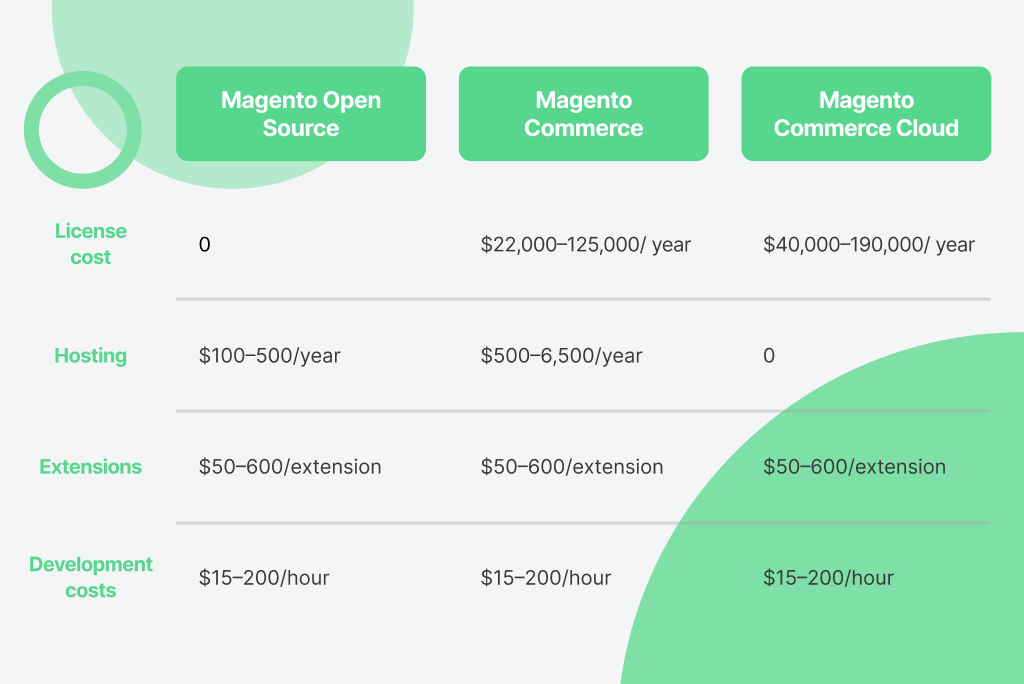Are you just starting out with the Magento platform? The decisions you make now can be crucial for the success of your future store.
The choice between different Magento pricing types and Magento versions can be confusing for a newcomer. But no worries; GoMage is here to sort these things out for you. In this article, we will answer most frequent questions:
- What are the Magento versions you should consider?
- Magento Open Source VS Commerce: how different are free and paid Magento editions?
- What is Adobe (Magento) Commerce and how is it different from Magento Commerce Cloud?
- What Magento pricing options are most suitable for your business?
We have covered these questions partly in the video below. But if you want a more comprehensive comparison – let’s dive into it.
Overview of Magento Versions: Magento Commerce vs Open Source Versions
Magento, one of the most popular eCommerce platforms, has been on the market for more than a decade. It was distributed in two editions: a paid Magento Enterprise edition and a free Magento Open Source (a so-called Magento Community edition).
After Adobe acquired the company in 2018, the famous Magento Enterprise was officially renamed to Adobe Commerce. Some still call it Magento Commerce. In this article, we will be using all those names for the paid version of Magento.
Magento Open Source also started functioning under the Adobe umbrella but kept its name. It is still free and you can use it without paying a dime.
Adobe (Magento) Commerce is Magento Open Source on steroids. The company took its open-source version and packed it with some additional features. In its turn, Adobe Commerce is available in two versions: Adobe Commerce on-premise and Adobe Commerce Cloud. The former comes with the provided Amazon Web Services hosting, which is not included in the standard Adobe Commerce license.
Magento Open Source and Adobe Commerce also have some fundamental differences when it comes to Magento features.
Page Builder
Magento Page Builder is a universally loved drag-and-drop tool which helps to manage and edit the content on your website. With this feature, you won’t need to turn to developers to make every slight change. This tool can be intuitively utilized by your non-technical team members.
Magento Page Builder will enable them to create pages, add textual content and position a wide variety of visual elements by just dragging them onto the page. See more of what Page Builder can do here.
The feature was first introduced only for Adobe Commerce, Magento’s paid users in 2018. However, due to the high popularity, the company added Page Builder to its free Magento Open Source version just last year.
That’s great news, you may think. However, we have to warn you: Magento Page Builder for Open Source lacks a few important content elements, like Page Hierarchy and Dynamic Blocks. As opposed to the Static Blocks which are displayed on the website at all times, dynamic ones are shown only to a specific group of the customers.
Unfortunately, previewing and staging content is also out of reach for those who don’t have Adobe Commerce license.
Magento B2B Features
If you’re planning on launching a website for your B2B business, Magento is the right way to go. There are tons of Magento B2B features which can help you communicate effectively with your clients and sell different kinds of products in bulk. With both Magento Open Source and Adobe Commerce, you are able to sell your products internationally and handle a few websites on just one admin panel.
However, Magento Commerce provides merchants with more B2B tools. This version enables your clients to create company accounts and set inner team hierarchies. For instance, some team members can be assigned with manager roles and approve large orders. Other registered employees are only allowed to ask for approval.
Thanks to this feature your clients can create their own approval processes while making large orders on your website. It also gives you a possibility to assign a specific type of payment or shipping to every company account.
Apart from this, Adobe Commerce allows you to make large orders with CSV files, create customer-specific pricing and catalogs. Certain prices can be shown to particular customer groups or just not displayed at all. Instead, customers can place quotes and negotiate prices. This type of communication can strengthen connections between sellers and buyers which is crucial in B2B sales.
Magento Search
Search is a fundamental feature for every eCommerce website. If the client can’t find the product they need (although it’s actually available), this can drastically affect not just the user experience but sales revenue. Magento Open Source and Adobe Commerce actually offer two different search tools, and for someone who’s serious about eCommerce the choice between those two will be obvious.
Magento Open Source uses Magento Native Search which is also known as Elasticsearch. It’s a basic search function which doesn’t provide much speed, requires additional third party tools like Algolia or Klevu, and what’s most important – lacks search flexibility. It means that Magento Native Search won’t be able to catch a typo in the search request and guess what a customer meant by “mom jwans”. Instead, such search requests will be rejected.
Adobe Commerce is equipped with the AI-based Live Search which can catch misspellings and do a lot more. Live Search offers a Synonyms feature which anticipates customers’ needs by showing them additional requests based on their behavior and previous searches. With Live Search, you can have more control over things you sell: rate filters, hide products that are not available at the moment, or boost things that are not seasonally relevant.
Still not sure?
We did a detailed comparison of those two Magento search types, alongside with Algolia and Klevu. Learn more in our previous article: Magento Search: Which Solution to Choose in 2022.
Marketing features
Your marketing efforts put your business right in front of your target audience. That’s how they notice you among lots of stores on the Internet. With effective marketing, you can convert the ordinary website visitors into trusting customers, re-engage old clients and even encourage people to buy more of what you offer.
Magento Open Source and Magento Commerce can help you with all of the marketing needs above. With both versions, you can create specific discount logic, set up conditions for promotions and send out newsletters. They are also equipped with SEO best practices, e.g. you can edit your meta titles and descriptions easily.
Adobe Commerce goes a bit further and offers more marketing tools. With Magento Open Source, you will need to do a lot of custom coding and install paid extensions to reach such functionality.
Firstly, Adobe Commerce comes with a reward points system which you can use to design a unique loyalty program. Your customers may be rewarded for any transactions they make, and later use their points for any purchases. This tool is critical for those who want to build lasting relationships with customers.
With Adobe Commerce, your store can become a go-to source for the majority of clients’ shopping needs. For instance, it enables them to create gift registries or gift cards for personal holidays, which results in more people visiting your website.
Another way to increase brand loyalty is creating private sales. Adobe Commerce can make certain sales available only to the customer groups of your choice.
Adobe Commerce Cloud vs Adobe Commerce On-Premise
These two Adobe Commerce versions are quite alike and both have customizable and quality eCommerce functions. The key difference is in the hosting: Adobe Commerce Cloud is hosted on Magento’s Amazon Web Services (AWS) stack, and On-premise edition is hosted by the merchant.
Both versions will come in handy to the businesses with high website traffic and plans to expand in the future. However, According to Adobe, the Magento Commerce Cloud is more customizable and scalable: it provides enhanced security, 24/7 support and deprives you of the self-hosting troubles, since all the maintenance is managed by the AWS platform.
Magento Pricing
Last, but not least is Magento eCommerce pricing. Before budgeting website investment you need to take into account three factors that affect Magento Open Source and Magento commerce pricing. Count in:
- Magento license type (Adobe Open Source / Adobe Commerce/ Adobe Commerce Cloud)
- hosting for your eCommerce store
- 3rd party extensions and themes you may need
- Agency or freelancers’ fees
Yearly Magento Enterprise pricing starts at $22,000 and can reach up to $125,000. Magento Cloud pricing is between $40,000 – $190,000. How can you find out where your company is in this range? Well, Magento Enterprise edition pricing and Magento Cloud pricing depend on your company’s revenue: if it’s less than $1M you can lean towards the lowest numbers, if it’s more than $25M – towards the highest.
While Magento Open Source license is free, it will actually require a bigger extensions budget, since it lacks a lot of tools that are included into Magento Enterprise pricing plan.
Regardless of the license you choose, while calculating Magento eCommerce pricing, you will also need to consider fees for custom development services. Magento development costs vary from $15 per hour and can reach up to $200 depending on the developers’ location, expertise, and experience. You can hire either a freelancer, or an agency. Your choice will affect your Magento eCommerce pricing differently: agencies usually have higher rates. However, their inner working process is established, they have diverse expertise and take full responsibility for a project.
If you’re planning on hiring an agency or a freelancer, take a look at our guide on finding Magento developerswith detailed price ranges and important points to consider.
Now, use this table to do your math on Magento Open Source and Magento Commerce price:
Final Verdict: Magento Commerce vs Open Source Versions
The choice between Magento Open Source, Adobe Commerce and Magento Commerce Cloud depends strictly on your eCommerce needs. For some Magento commerce price is a critical factor, the others are looking for better search tools or marketing features.
For those who value the latter, Adobe Commerce, Magento paid and more advanced version’s tools will come in handy: it will help build effective relationships with customers and spend less time on development and maintenance. However, the free license delivers all the basic eCommerce functionality and opportunities. And with some extra development and plugins, you will be able to build a custom and unique experience.
If you are still not sure which Magento version is better for you, don’t hesitate to contact us and we’ll help you decide!








